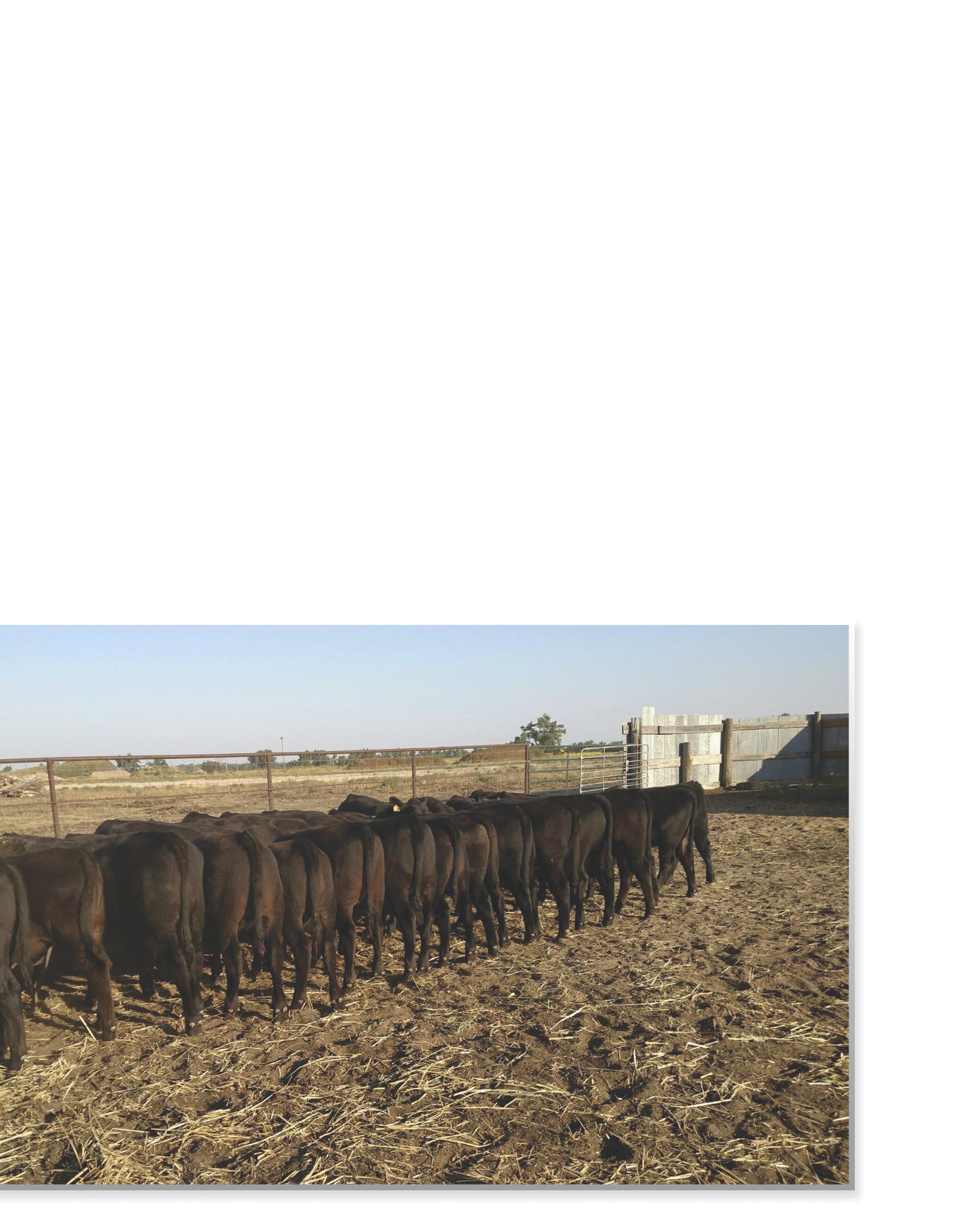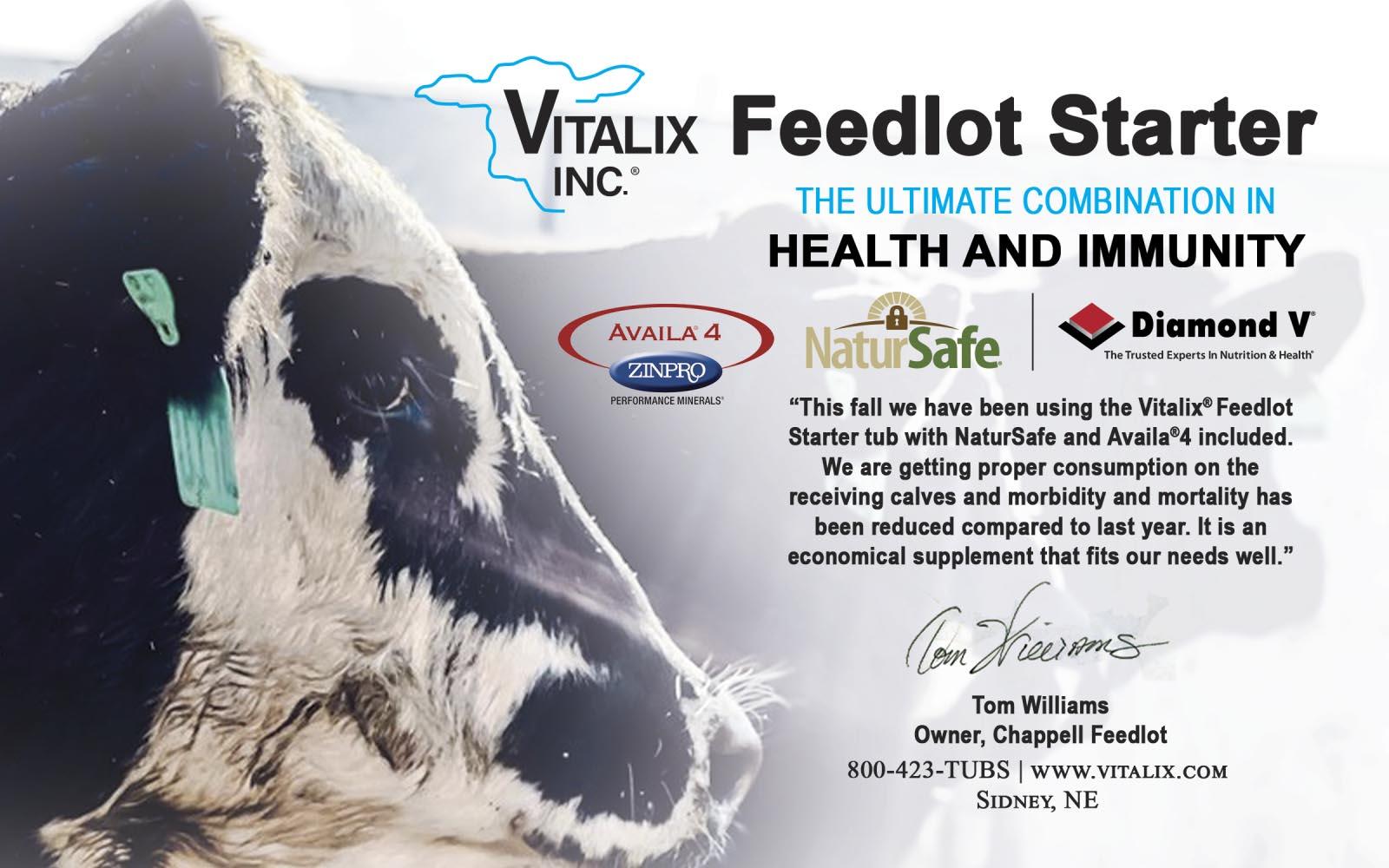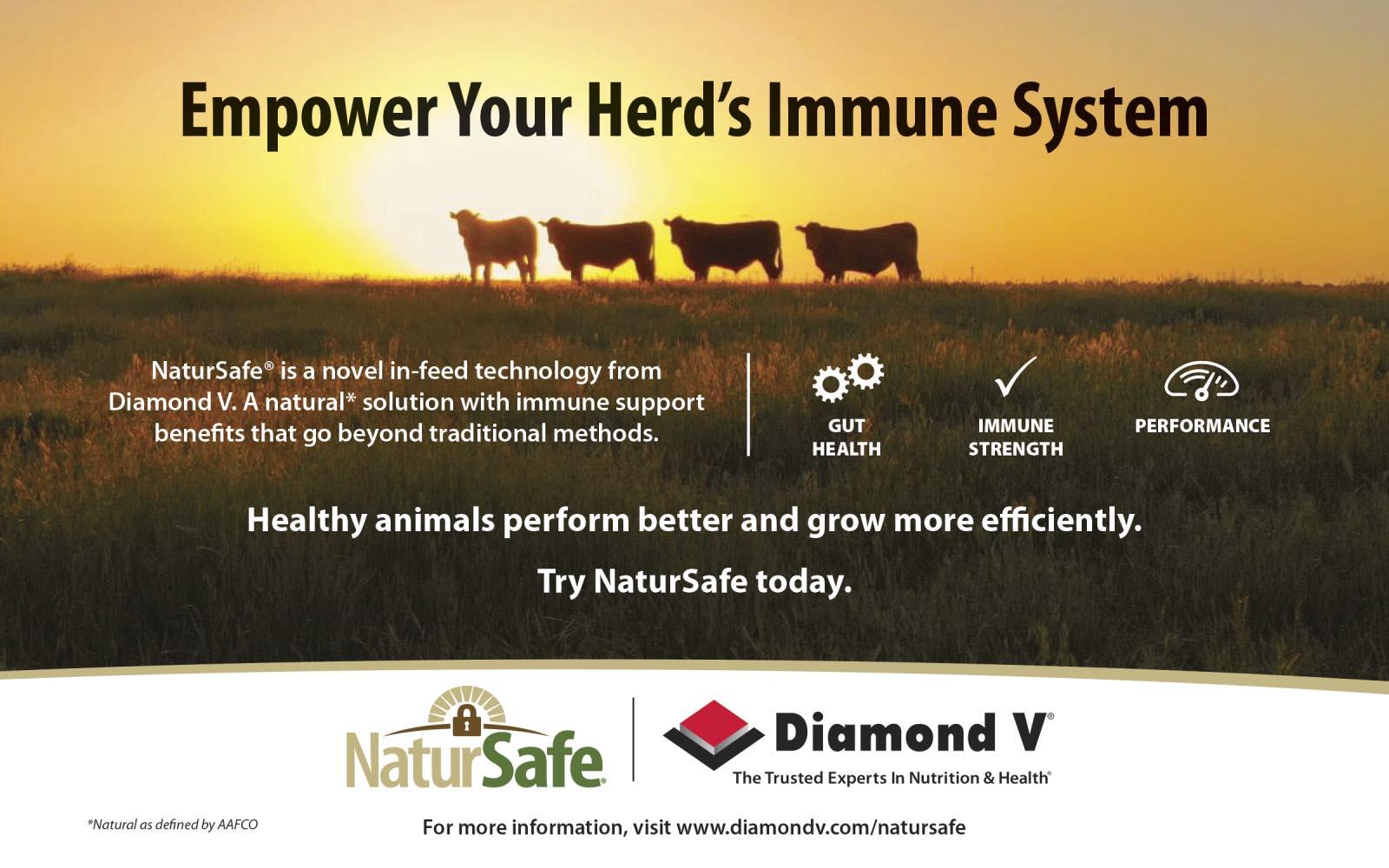
6 minute read
Early Weaning: Why, How and Results
By Chad Engle, U.S. Meat Animal Research Center
Managing cow herds while battling “Mother Nature” is the norm for cattle pro ducers. The most important battle is for rainfall. Rainfall in 2019 was excessive for many of us; however, 2020 has swung the pendulum in the opposite direction in south-central Nebraska. Most pro ducers recognize that there are few great options available to manage through times of inadequate moisture, but one of the most effective is early weaning.
At the United States Meat Animal Research Center (USMARC), located in Clay Center, Nebraska, we are very accustomed to early weaning. In fact, we typically wean our calves much earlier than many operations without increasing morbidity and mortality rates. According to NAHMS survey data, the average age of a weaned calf is 221 days of age in the U.S. Even in years of adequate moisture, or dare I say “normal” conditions, the average age of a calf weaned at USMARC is closer to 150 days of age.
So why wean early? What are the most important factors to increase your chances of success? Does early weaning have an impact on calf performance in the feedyard or heifer performance in the cow herd? Let me share some of what we have learned to help you determine if early weaning is an option for your operation.
Why wean early?
Admittedly, one of the reasons we at USMARC wean earlier than most is our need to get calves in the feedyard, weaned, and sorted up for the experiments they will be on for the feeding period. With a cow herd exceeding 8,000 head coming off 22,000 acres of rangeland, this process takes a while and it cannot be rushed if you want to do it right.
Beyond the research needs, the biggest advantage to early weaning is reducing the load on our grazing acres. By removing the calves from the equation, we remove roughly a third of the animal units (AU, defined as 1,000 pounds of animal) off the pasture.
In addition, and more importantly in my view, we greatly decrease the nutrient demands of the lactating female. Simply put, limited forage and decreased forage quality that are often associated with times of decreased rainfall will sustain her longer and better when she is not trying to produce milk for a 450-pound calf that will consume every ounce of milk she produces. This can be really advantageous in the younger cows and heifers in our cow herds that have the highest energy demands and who often calve early in our calving season. Early weaning can increase longevity in older cows as it gives them more recovery time heading into winter and the subsequent calving season, perhaps making that “one more year” a reality on our better older cows. The way that I like to think about this in times of limited rainfall is that I know I am going to be feeding something, and I would much rather feed those highly efficient 4-weight calves than I would my cow herd.
Additionally, feed costs are the highest cost we incur in our ranching units and we often do not have the infrastructure, equipment, and efficiency in our cow feeding operations that our feedyards do. This is another reason to get the calves off early and get the most bang for your buck you can off every inch of forage you can in order to sustain your grazing acres longer and minimize the amount of feed you put in your cow herd.


Factors for success
We all know that the most stressful event in a calf’s life is the day it is weaned; therefore, we want to do everything we can to prepare for this day. In reality, the weaning process starts the day the calf is born. We prepare our calves for weaning by having positive interactions with them at tagging, branding, preconditioning, and on weaning day. If we have done our homework, we are well on our way to successfully removing those calves from the pastures and the comforts of their dams and acclimating them to the feedyard.
I like to think of our feedyards as five-star hotels. Once those calves step into our “hotel”, they should be greeted by knowledgeable handlers, fresh feed, clean waterers, and clean pens. We never put new calves into pens that do not have fresh hay and ration in the feed bunks. It is our job in the feedyard to show those calves that the feedyard is the best place on earth for them to be.
Weaning younger calves does require paying particular attention to feed bunks and waterers. We need to make sure calves can reach both with ease. Using our hotel analogy, we would not go back to a hotel with a buffet that we could not reach or a beverage we could smell but barely get a taste of. In some cases, it is well worth the effort to add additional water tanks that mimic what the calves have seen while grazing with mom. If a calf does not drink, then he will not eat. If a calf will not eat, then he will get sick. If a calf gets sick, well, you get the point. Even if we have done everything right up to the day of weaning, if we place our calves in a facility that is not ready for smaller calves, we will be headed down the road to disaster.
We also want to pay particular attention to bunk management. One key factor is having the correct rations and plenty of hay for the calves at arrival. Finding the balance of keeping the calves coming to the bunk but not hungry is a topic for another day; just know that when you wean your calves, this point is critical to success. Having well-mixed rations with good bunk distribution is always important, but due to relatively small intakes at weaning time, mistakes in feed distribution or ration mixing can quickly have adverse impacts on calf health and performance. Feeding distillers byproducts has been a great way to increase protein content and palatability of the rations while at the same time helping to alleviate some of the digestive risks such as bloat and acidosis that are associated with weaning calves and starting them on feed. While I am not a nutritionist, I like to have rations that are a minimum of 14% crude protein and at least 60% TDN to ensure that the calves’ nutritional needs are met even during times of minimal intake.
Even at a research institution, cost of gain management is important, and we constantly evaluate our rations and costs to see what we can improve or do more efficiently. COVID-19 and 2020 have caused us to take hard looks at the distillers inclusion rates in our rations. I would encourage cattle producers everywhere to do the same thing. Distillers grains are not what they were ten years ago and the performance we get from them, and their respective costs, need to be considered critically, even when starting calves on feed.
The bottom line is if we are well-trained stockmen, are following good animal health protocols, have a good nutrition program, and have a well-maintained feedyard, we can be just as successful weaning our calves at 150 days of age as we are at 220 days of age.
What about the future?
I would venture to guess that some of you reading are asking yourselves if weaning calves at a younger age has negative impacts on the performance of that calf in the future. It stands to reason that longer time spent in confined feeding situations can potentially lower endpoint weights on fed cattle and get our breeding stock too fleshy. The truth is that it depends. Properly formulated rations and disciplined feed-calling can help us avoid the potential pitfalls associated with starting calves in the feedyard at younger ages and lower weights. I am not trying to imply that we can get the same performance out of a calf weaned at 400 pounds as we can get with a 950-pound yearling brought into the yard, but I am saying that we can make the economics of that 400-pound calf leaving the feedyard at 1350 pounds versus the 950-pound steer leaving at 1500 pounds work in our favor. They can be equally as profitable.
The key to making early weaning work is our cattle handling, facility, and feed management skills. I would never say anything is easy in our business, but I can guarantee a 9-weight yearling is more forgiving to a mistake we make with a feed call or facility design than a 400-pound bawling calf would be.
The value of early weaning lies in attention to detail. If we can be exceptional stockmen from start to finish, these calves can come into our yards and flourish. There is no replacement for well-trained stockmen, and you might be amazed with the rewards when testing those skills by pushing that weaning date up. It works for us.










